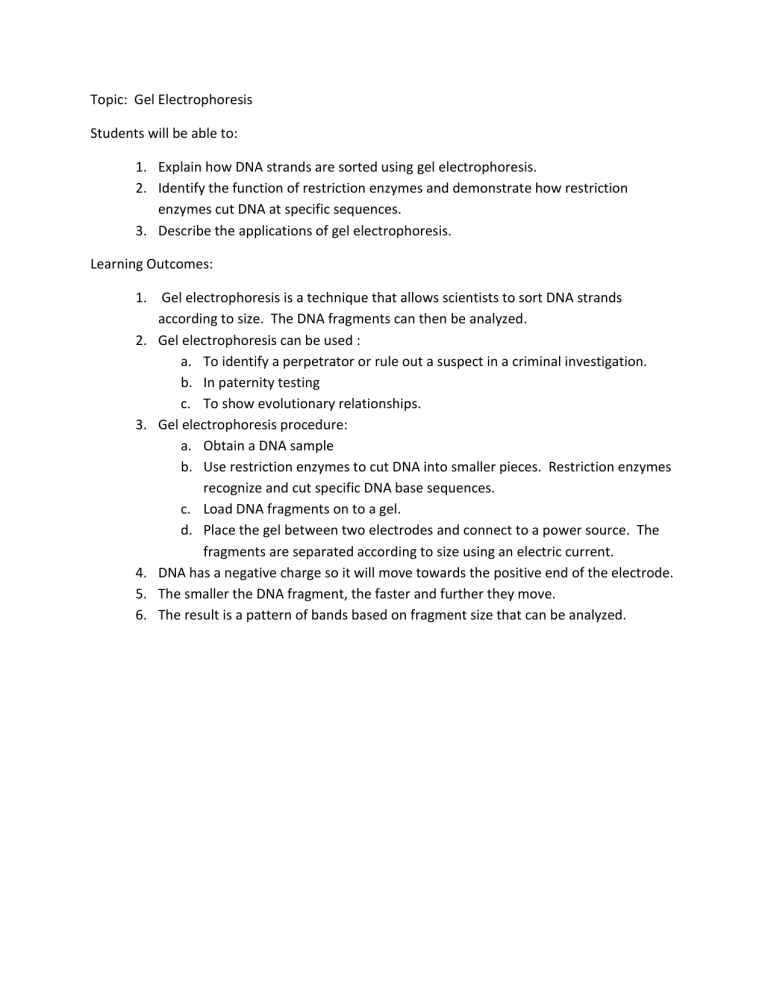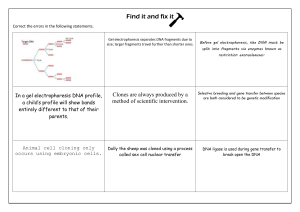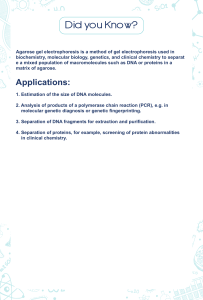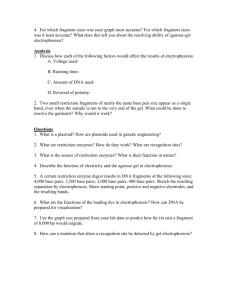
Topic: Gel Electrophoresis Students will be able to: 1. Explain how DNA strands are sorted using gel electrophoresis. 2. Identify the function of restriction enzymes and demonstrate how restriction enzymes cut DNA at specific sequences. 3. Describe the applications of gel electrophoresis. Learning Outcomes: 1. Gel electrophoresis is a technique that allows scientists to sort DNA strands according to size. The DNA fragments can then be analyzed. 2. Gel electrophoresis can be used : a. To identify a perpetrator or rule out a suspect in a criminal investigation. b. In paternity testing c. To show evolutionary relationships. 3. Gel electrophoresis procedure: a. Obtain a DNA sample b. Use restriction enzymes to cut DNA into smaller pieces. Restriction enzymes recognize and cut specific DNA base sequences. c. Load DNA fragments on to a gel. d. Place the gel between two electrodes and connect to a power source. The fragments are separated according to size using an electric current. 4. DNA has a negative charge so it will move towards the positive end of the electrode. 5. The smaller the DNA fragment, the faster and further they move. 6. The result is a pattern of bands based on fragment size that can be analyzed.





